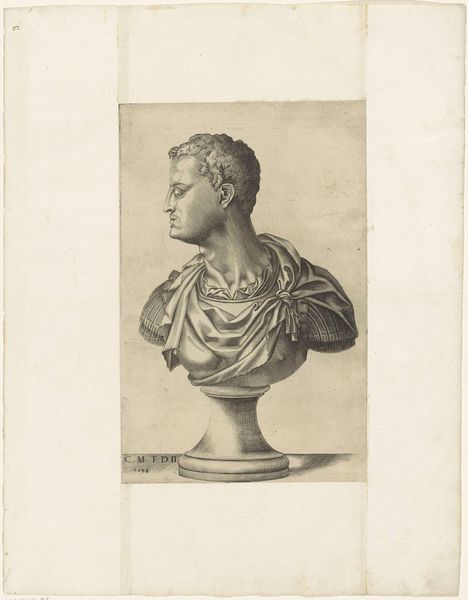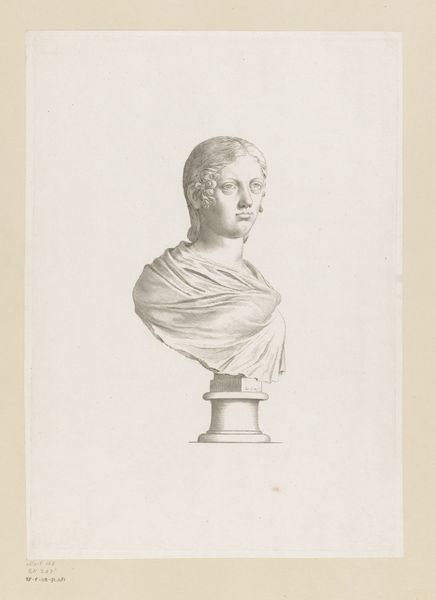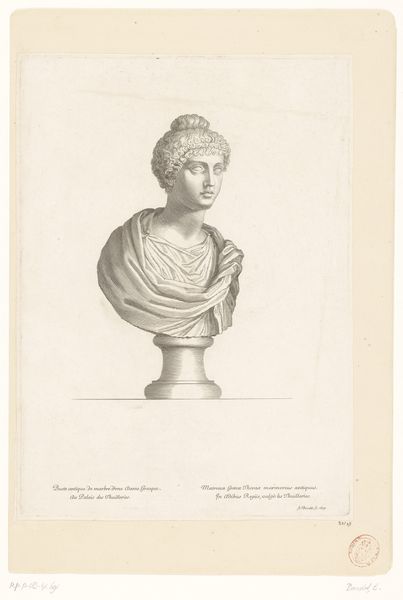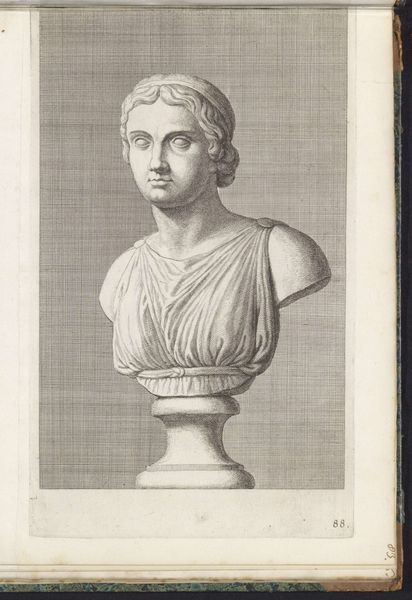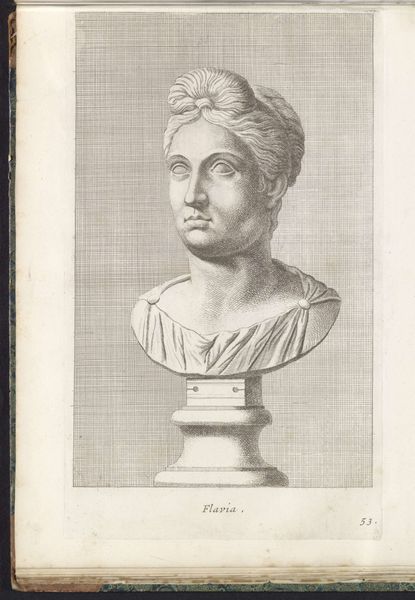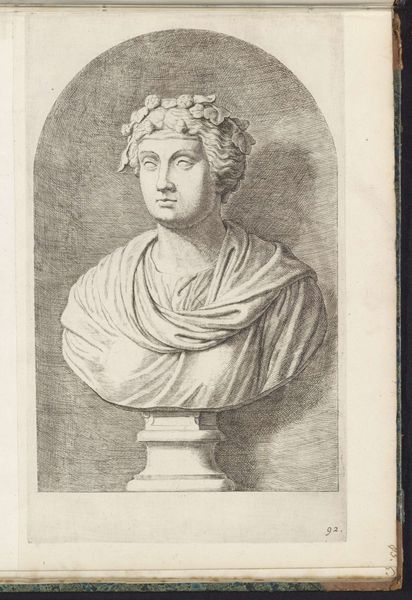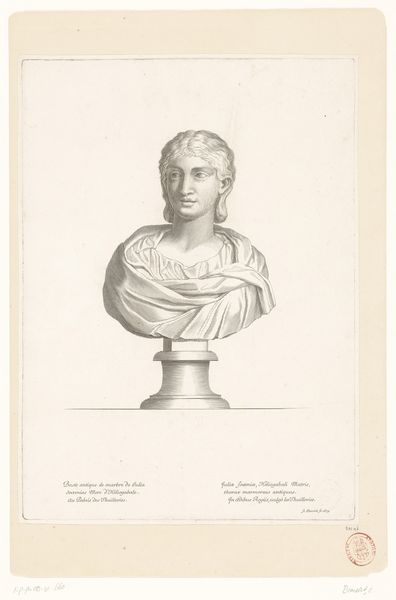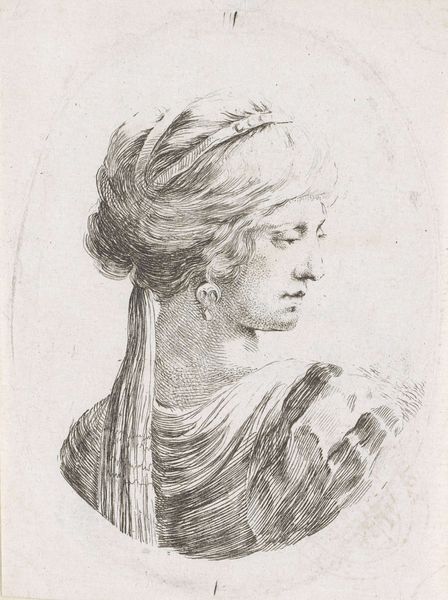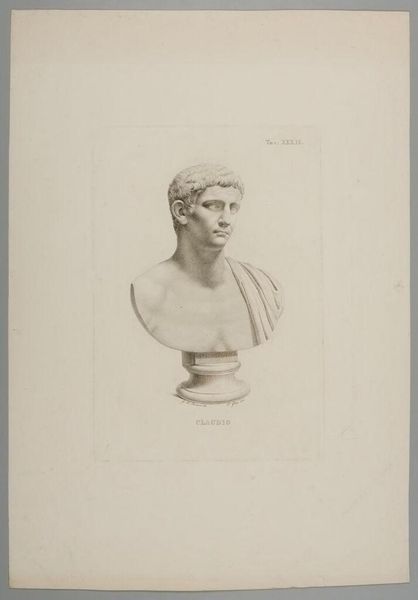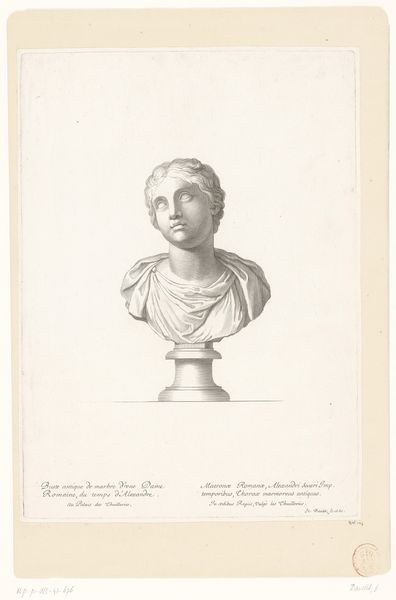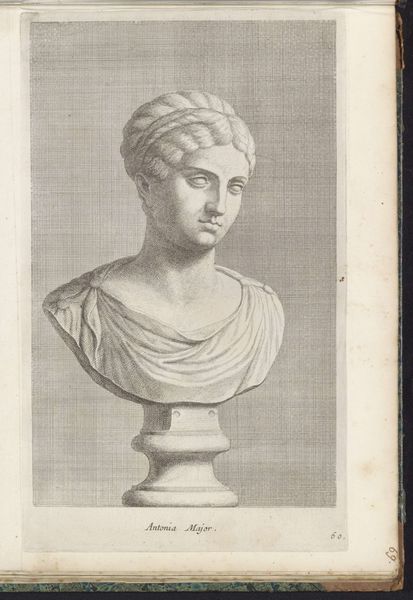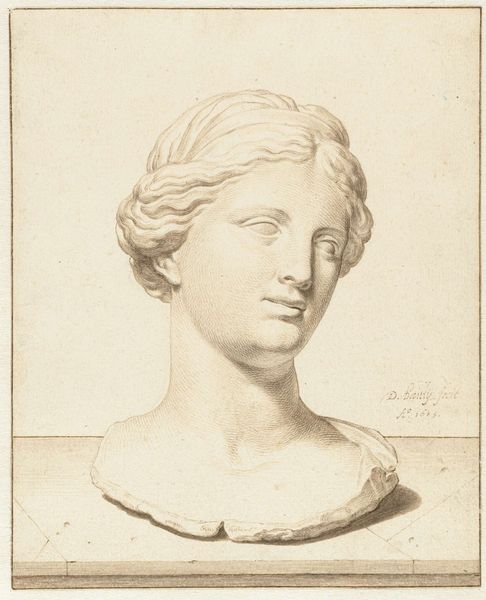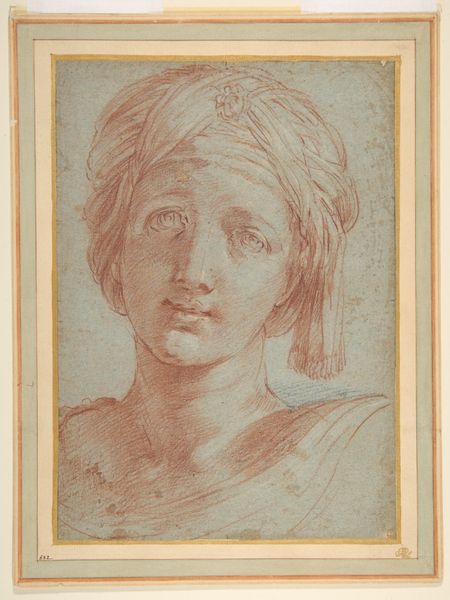
print, engraving
# print
#
old engraving style
#
classical-realism
#
form
#
personal sketchbook
#
line
#
portrait drawing
#
history-painting
#
engraving
#
realism
Dimensions: height 265 mm, width 215 mm
Copyright: Rijks Museum: Open Domain
Curator: This engraving, "Buste van een vrouw," possibly from 1863 and attributed to C.A. Tuchs, presents a fascinating study in classical form using a minimalist approach. What strikes you first? Editor: The almost eerie stillness. It’s not just a likeness; it's an evocation of the female form caught between objectification and potential agency within 19th-century societal constraints. The coolness, it speaks volumes about restricted opportunities for women. Curator: Note the precise, parallel lines defining the drapery. This hatching technique builds volume and light through a strict adherence to form, a sort of visual logic. The classical-realist style renders her an ideal but also confines her. Editor: Absolutely. The realism, almost cold, feels like it reinforces societal expectations rather than challenging them. Her gaze, though direct, holds a vulnerability shaped by these confines. Are we meant to admire beauty, or reflect on its cost? Who does this ideal actually serve? Curator: The "history-painting" aspect also adds another dimension. It places the sitter in a lineage, but perhaps, like you say, not necessarily a progressive one. This placement suggests how art legitimizes and disseminates prevailing ideologies through aesthetic appeal and classical form. Editor: Right. The artwork engages with the visual language of power. The 'Buste' as form reduces her into ideal object; a symbol of tradition rather than as human with individual agency. Is this meant to portray a "universal woman", devoid of nuance and complexity of actually lived experiences. Curator: It's a powerful dialogue between what is seen and what might be suggested, or even resisted, within the work itself. Considering the print as object of classical aesthetic provides its own point to decode social-economic and gender power at play in this historical context. Editor: Exactly, and seeing it from this angle also sheds light on the narratives often absent or distorted within dominant historical representations. Curator: A potent demonstration of how art can hold, perhaps unwillingly, the tensions of its time. Editor: An excellent starting point for discussions around representation, identity, and the socio-political forces shaping artistic expression.
Comments
No comments
Be the first to comment and join the conversation on the ultimate creative platform.
